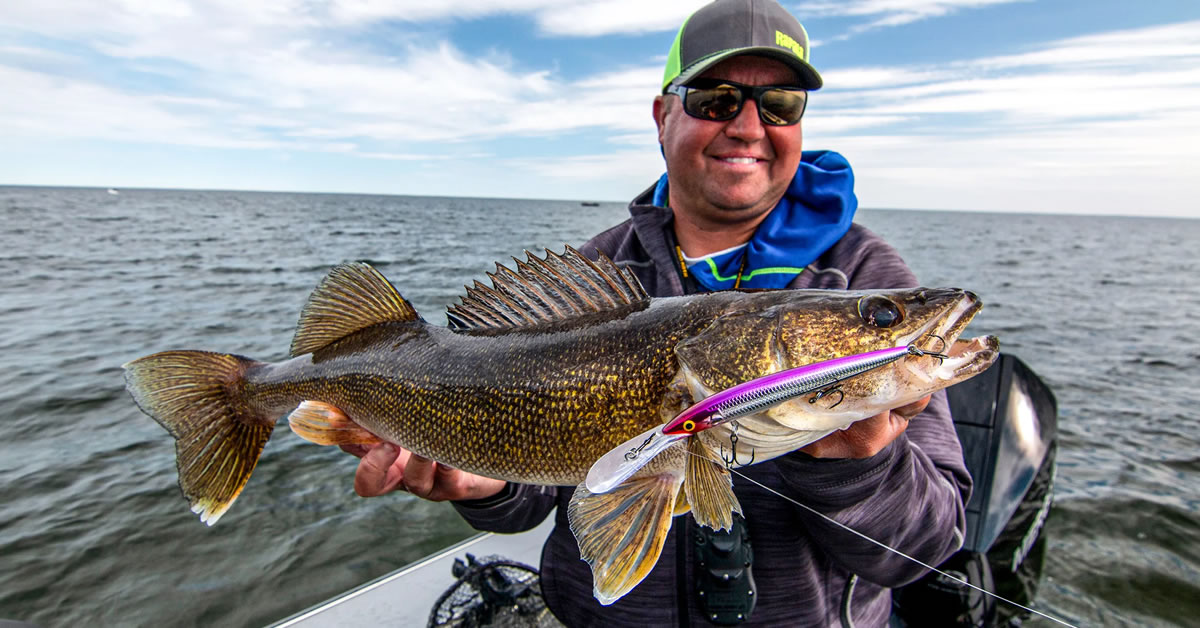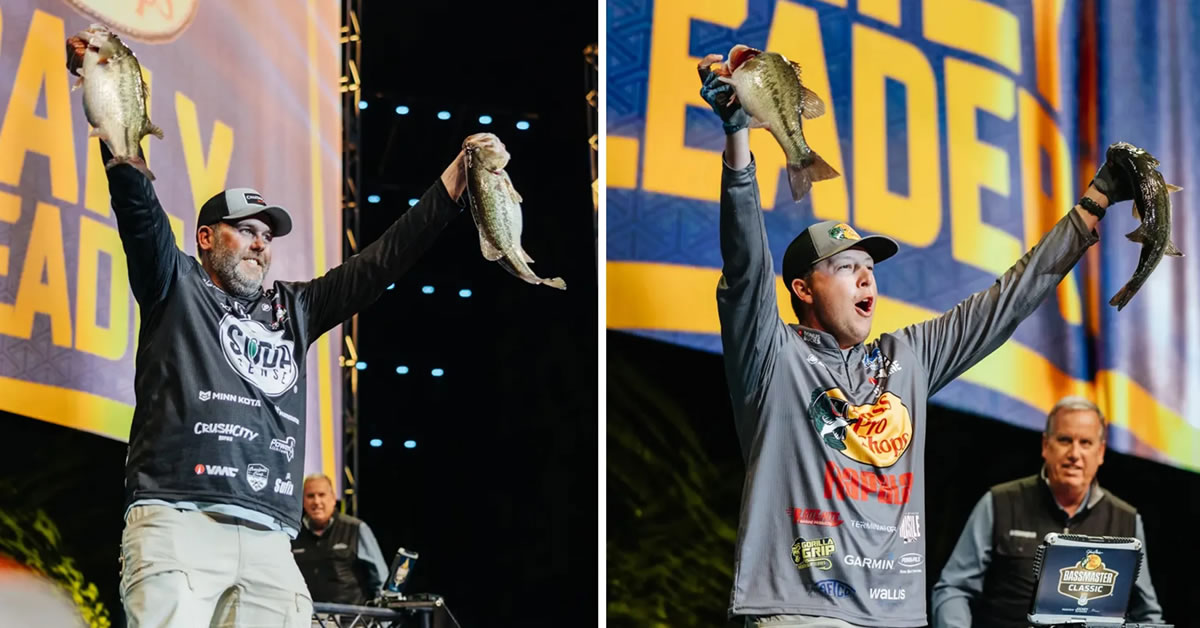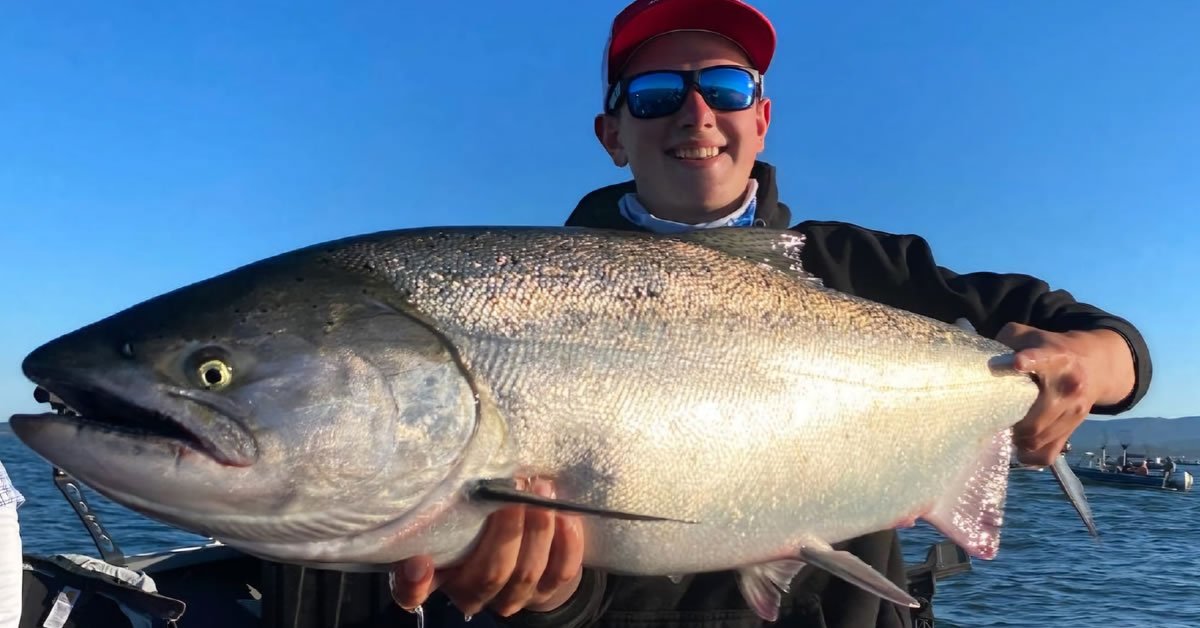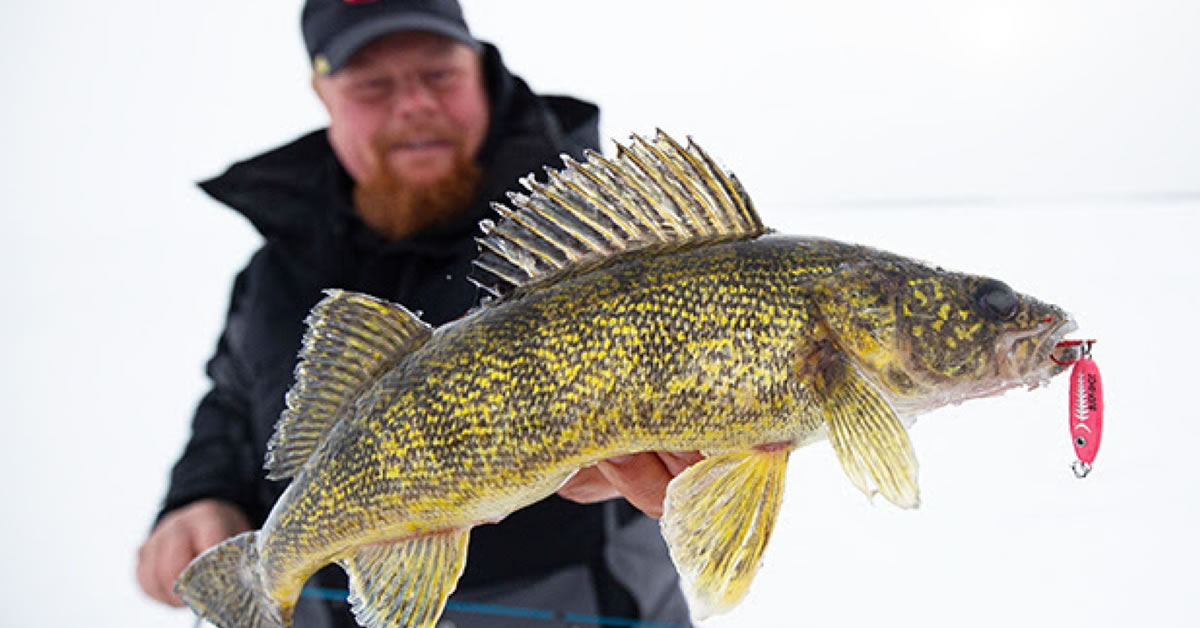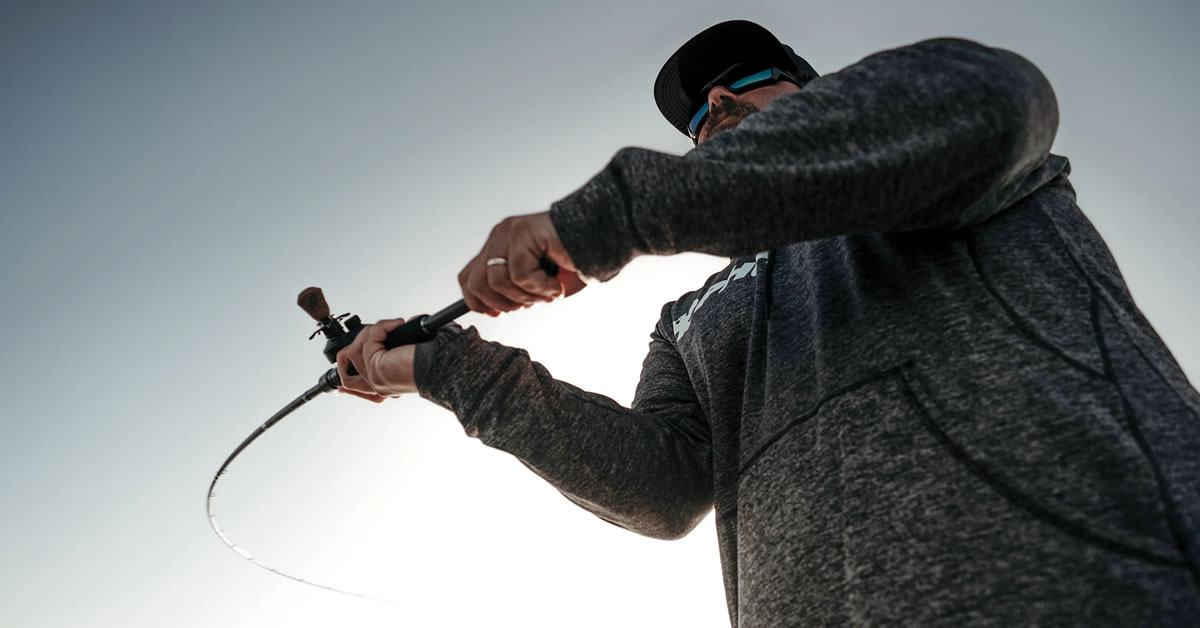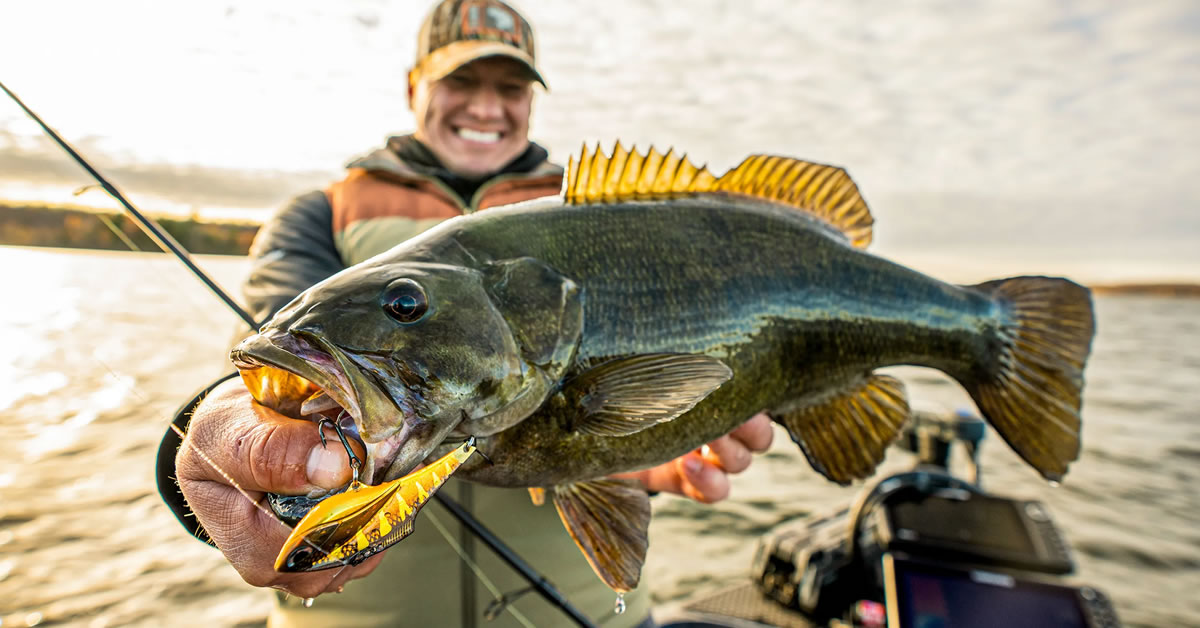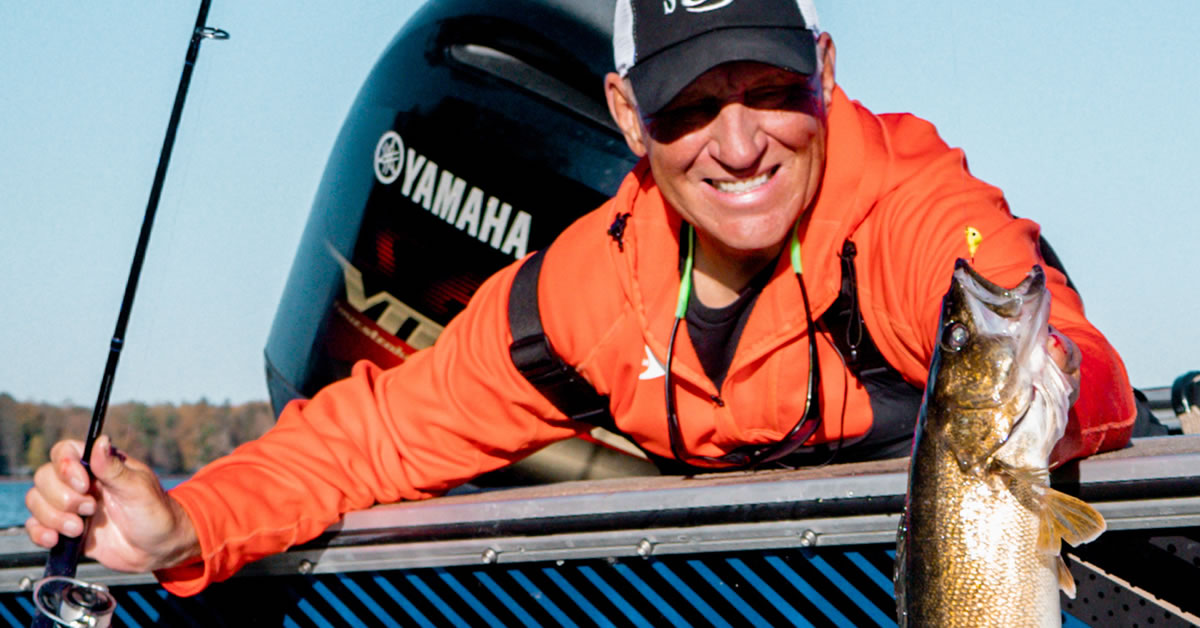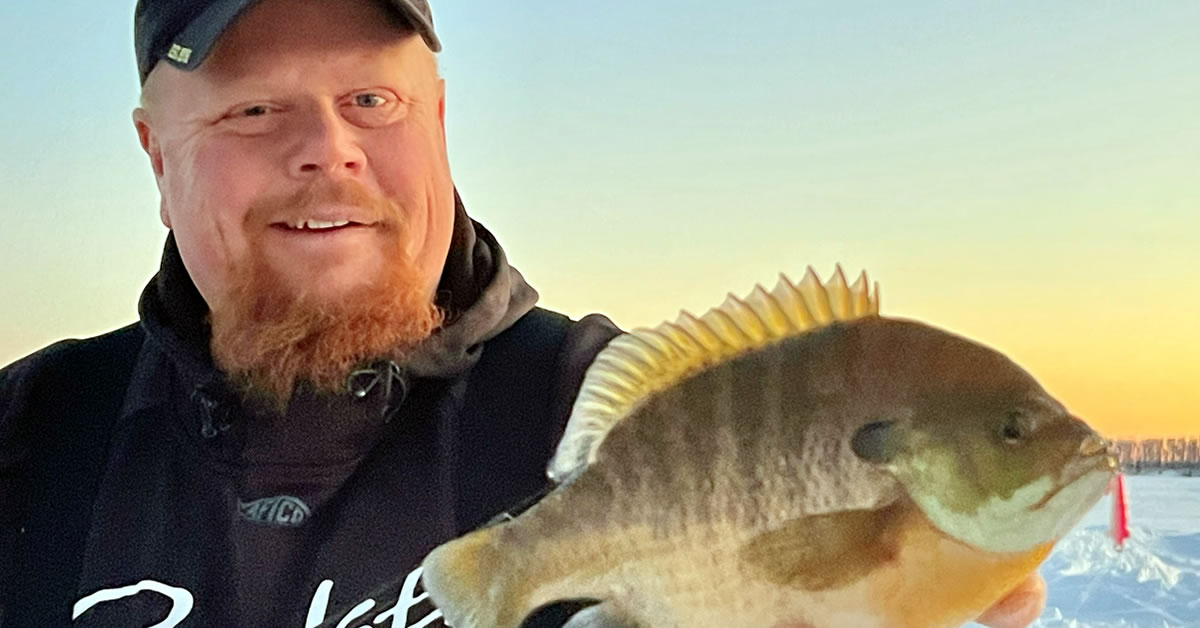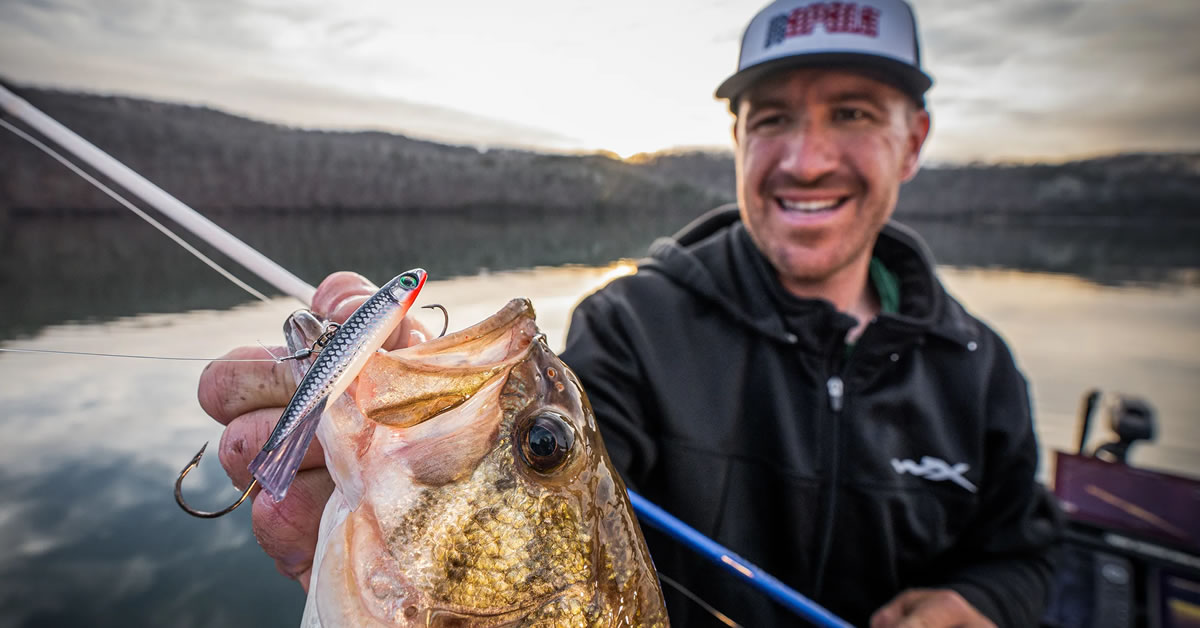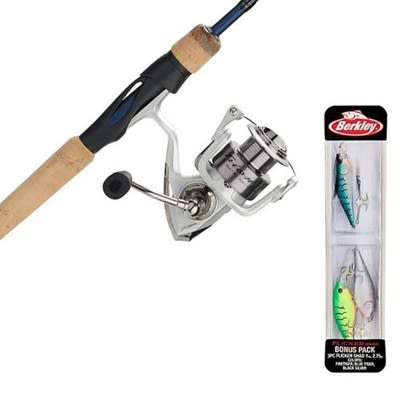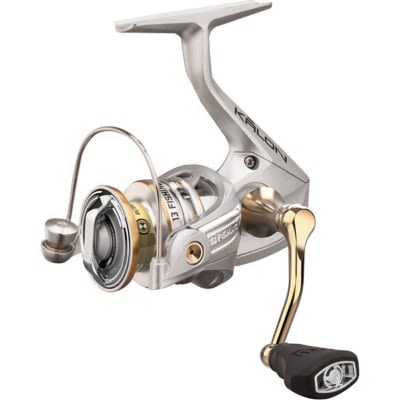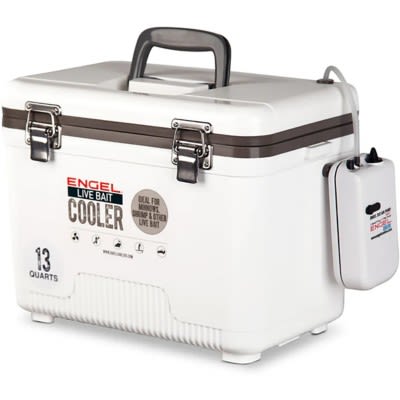Anatomy of Successfully Swimming Grubs for Smallmouth Bass
by Bill SchultzAs many of you know, I'm a smallmouth bass enthusiast. Swimming a grub is a staple for many smallie anglers. Some of you have likely used grubs from a variety of companies while on the water. It's unusual to find a lure that works so well that for years you use almost nothing else. For me, that's the Kalin's Lunker Grub, my grub of choice. I caught my first smallie on this lure in 2007 and since 2008, it's been just about all I use on the waters Door County, lakes in Southeast and Southcentral Wisconsin, along with the many rivers I fish. Since 2008, during May and June, I have been on Green Bay in Door County over 100 days catching and releasing 4,000 smallies. Refining the Kalin's presentation since 2008, my numbers have increased to well over a 40 fish per day average each of the past few years, fishing in all conditions. This presentation has also become my go to lure for river smallies. A typical outing in waders is three to four hours, with 30 to 50 smallies the norm.
.jpg)
Selecting the Proper Color and Size
Picking the proper grub color and size is important. This can come through experimenting, reading articles or listening to suggestions from those of us who've fished grubs with success. For rivers and lakes with limited visibility, I've narrowed my color choice to Blue Pearl Salt and Pepper, and have found the 4" version to be my best size. This color is off-white with blue and black specs. Experimenting may lead you to successfully trying other light colors on waters with low visibility.A number of years ago, friends who live in Sturgeon Bay and fish for smallies, told me of the success they have with Kalin's 5" Clear Smoke. Taking that suggestion I began using the 5" Lunker Grub in Clear Smoke, Ed's Smoke and Smoke Salt and Pepper, all with good success. With the success I've had on rivers for years with the "small" profile Rebel Teeny Wee-Crawfish, and with fairly cold water temps as late as early June on Green Bay, I was looking for something a little smaller. I didn't want to go as small as 3". With the 4" success on rivers, I began experimenting with the 4" Smoke Salt and Pepper, which is the only one of the three smoke variations that comes in the 4" size. Just like the rivers, I had immediate success, gained confidence and over the past three years this is primarily what I use. I have had good success in water temps down to the low 40 degree range and, would suggest adding the 5" Kalin's in the colors I mention as the water temperatures begin hitting the mid-50 degree range. This gives you additional options.
.jpg) In Door County those "little protein bars" called Gobies, an invasive fish species, have become a key food source and is creating some very fat smallies. You might consider Lunker Grubs or other grubs in various shades that mimic the Gobies. Because of my success with the "smokes" colors, I have not tried matching the Gobie color, but do carry Avocado, Dirty Avocado and Apple Juice. The key to any body of water is to experiment with size and color, until you get it right. Sometimes you get lucky and find a couple of colors in a size that continues to produce for years.
In Door County those "little protein bars" called Gobies, an invasive fish species, have become a key food source and is creating some very fat smallies. You might consider Lunker Grubs or other grubs in various shades that mimic the Gobies. Because of my success with the "smokes" colors, I have not tried matching the Gobie color, but do carry Avocado, Dirty Avocado and Apple Juice. The key to any body of water is to experiment with size and color, until you get it right. Sometimes you get lucky and find a couple of colors in a size that continues to produce for years.
Proper Tackle to Maximize Success
Proper tackle includes rod, reel, line and the "right" jig. When I began using the Kalin's Lunker Grub in those ultra-clear Green Bay waters, I was already using 7' medium and medium light rods for a variety of other presentations, which from the start helped my grub fishing. But, I soon realized to get the kind of distance I needed, I had to go with 7' 6"rods with a medium-light action. However, human nature made me want even more distance. At the suggestion of friend, Tim Dawidiuk, formerly a top Door County guide, I gave the St. Croix Legend Tournament 8' medium-light a try and knew immediately I'd found the "perfect" grub rod! I get tremendous distance and it has plenty of backbone to get those big 4 to 6 pound smallies to my Crestliner or one of my Wilderness Systems kayaks and back swimming. This Legend Tournament rod retails for $250, and I think it is a great value. But, for the more economy minded, who still want a quality rod, I recommend the 8' medium-light in the St. Croix Eyecon series for $130. I've fished the Eyecon often and it's an outstanding rod and value. So, my suggestion is a 7' 6" or 8' medium-light action rod for maximum distance. Most of the rivers I fish are relatively small, so I'm able to get the distance I need with 7' medium-light rods. Because of the abundance of smaller smallies in these rivers, I also will us a 7' light action rod.Let's look at reels. I do a Reel Review article every year, so I've had a chance to fish numerous reels that I consider great for the type of smallie fishing I do. I love the Daiwa 2000 series reels now with the faster retrieve ratio. You can't beat the variety Shimano offers in both the 1000 and 2500 size. My favorite, because of its very light weight, is the "new" Ci4+. Other outstanding reels I've used many hours are the Pflueger Supreme XT (30 size), Arbor, "new" Purist, which only retails for $79 and the Abu Garcia Revo SX30. All these reels have long cast spools, are 6 to 8.5 ounces, can handle plenty of the "small" diameter braid or superline I use and most have the faster retrieve ratio I prefer. The reel "is" important, but most important is the line you put on the reel and proper spooling.
A lightweight rod and reel combination is important as a half-day or day of swimming grubs will include hundreds of casts. So weight is important.
When I talk about spooling properly, I mean very close to the lip for maximum casting distance. Lines like Power Pro 10/2, 8-pound and 10-pound Nanofil, 8/3 Fireline Crystal and 15/2.5 Daiwa Samurai are my favorites. On smaller reels 20 or 30 yards of mono backing is appropriate, attaching the braid/superline with a uni to uni knot. Only larger reels like the Shimano 2500 or Pflueger Supreme XT, fill a third or half the spool with mono and the rest with the braid/superline. A properly spooled reel with mono or fluorocarbon, just won't give you the distance you want or need in clear water. I also use a 20-30 inch fluorocarbon leader all the time. I attach the fluorocarbon to the braid/superline with uni to uni knot, which is what Power Pro recommends. On rivers or lakes where the smallies don't reach Door County proportions, 8-pound fluorocarbon is fine, but where big smallies swim, 10-pound fluorocarbon is better.
The jig is a "key" part of the Kalin's presentation, and, please, don't buy bargain bin jigs. It is important to use a jig with a long hook shank so it goes the length of the grub's body and exits just as the tail begins. I have used Gopher Tackle mushroom head jigs for six years and I've found nothing better. My favorite is the Big Johns with the flush, sideways, 45% eyelet. On shallow rivers, the 1/16 oz. is best and on lakes, 1/16 oz. and the 3/32 oz. Occasionally, if I want to fish deeper, I use the 1/8 oz. Jighead color can be debated, but I use both black and unpainted with great success.
Another part of the Kalin's presentation that is "very" important is proper threading of the grub on the jig. The Kalin's was designed to swim tail down. The hook shank "must" follow the seam down the body. Not doing this or having a bulge on one side or the other will cause the lure to wobble and not produce. A tip is to move your fingers down the body of the grub as you rig it. I usually move my fingers three for four times supporting the sides as I thread the jig. And, as you fish it, continue to make sure is has not twisted. Once the grub starts sliding down the hook shank on casts, replace it. Another tip to get more life out of your grubs is when it begins sliding down, bite a little off the end and thread it tail up. You probably won't notice a difference bites.
The reason why rod, reel, line, spooling properly are so important, especially in ultra clear water, is to give you the best chance at getting a hit. Unless it is windy and rough, the fish will be spooked. In ultra-clear water, another reason for the fast retrieve reel is that by the time your grub is half or two-thirds of the way back to the boat you are out of the strike zone because the fish will see the boat and become skittish. At that point I want to get the lure in and cast as quickly as I can. Noting this fact, if you don't have proper equipment and your reel is not properly spooled, you have less time in the strike zone than I do, because your casts will be shorter. In low visibility waters, this is not as much of a problem. And, even in clear water isn't the same while wading or kayaking.
Retrieve Speed for Your Grub
I've had this debate with a number of Kalin's aficionados and the debate usually centers on, "how slow is slow". Most successful grub anglers would say slow is just fast enough to keep the grub off the bottom. If you tick the bottom, speed up slightly. The Kalin's Lunker Grub was designed to be retrieved slowly in all water temps. Whether the water is 45 degrees or 75 degrees swim it slow. "Slow" gives maximum action to that phenomenal, long, tall and very thin tail. So, whether you use the Kalin's Lunker Grub or not, you should look for a grub with this type of tail. Along with the exceptional tail, the larger profile body on the Kalin's adds to the entire package that attracts those strikes. You may be tempted to speed it up in warmer water, but don't. Also, on rivers, I cast cross current or downstream and retrieve with the current. Both scenarios are much easier to control your speed. Certainly, retrieving with the current works, but it is so hard to control the speed and you will have many more snags on rocks.Just a Great Lure
It's fun to be on the water in my boat, paddling one of my Wilderness Systems kayaks or wading, which puts me as close to nature as possible. However, I'm on the water to catch smallies, and for me swimming a grub, and in particular, the Kalin's Lunker Grub produces the numbers I'm looking for! If you have any questions about this great presentation, please email me at [email protected]..jpg)




